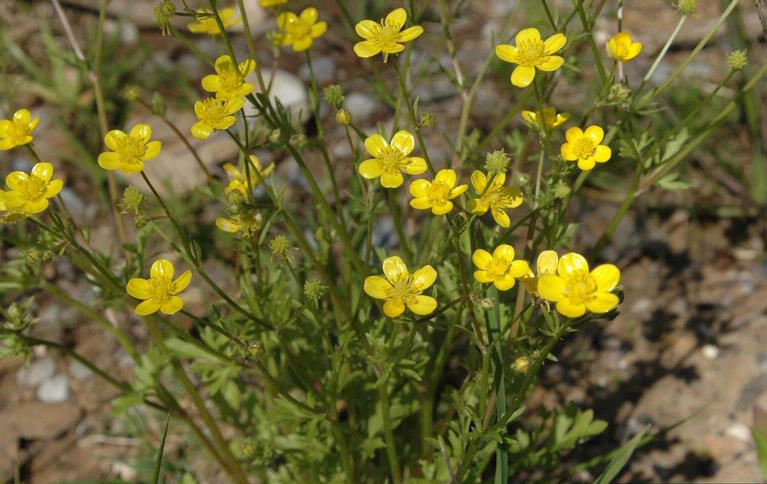
Spring has undoubtedly arrived in Georgia.
Local pastures and lawns remind me of the lyrics from “America the Beautiful,” “Oh beautiful, for spacious skies, for amber waves of grain.” Except that almost every call this week has been about amber waves of buttercup, something that neither livestock nor humans like to eat.
In fact, this weed competes with the grains and grasses that we are trying to grow. Although this common weed is not toxic to livestock, it has no redeeming characteristics to make it palatable.
Buttercup (Ranunculus spp.) is one of the most prolific spring weeds and is easily recognized by its bright, glossy yellow flowers. Technically it is a winter annual weed, which means that it germinates in the fall and grows all winter long until it flowers in the spring. Buttercup will naturally begin to die out as we get closer to June and see warmer temperatures. The roots will not survive the summer heat in Georgia, but any seeds that are set now will start the cycle over in the fall.
Prolific weeds such as buttercup compete with underlying grasses and potentially reduce their growth in the spring. This reduces the amount of forage yield available for livestock grazing pastures. Fescue lawns and pastures may end up with bare spots as a result of this competition, which allows more summer weeds to colonize and compete later in the season. Because fescue is a clump-forming grass, it will not spread or grow back into these bare spots.
The key is to get annual weeds under control before they flower and seed set, minimizing their return next year. Ideally, buttercup should be controlled prior to flowering in March or April. At this point, that ship has already sailed.
Mowing to reduce flower and seed set can be an effective strategy to manage this weed and reduce the number of flowers and seeds that mature, but you would have to mow almost every week to keep the flowers in check. Frequent mowing is more practical in a lawn than a pasture.
Unfortunately, most people don’t recognize that they have a problem with buttercup until after the weeds start to flower. Take a close look at the cluster of leaves near the ground called the “basal rosette” — this is how buttercup begins in late fall and early winter. Keep a look out for this earlier growth stage next year and be ready to take action for control.
There are several good herbicide options for managing buttercup. Ideally, an herbicide containing 2,4-D combined with a surfactant should be applied to winter annual weeds prior to flowering. These herbicides work better above 65 degrees Fahrenheit, so be sure to spray on a warm, sunny day. Applications with herbicide formulations that contain mixtures of 2,4-D and Dicamba also provide good to excellent control of buttercup in the early stages of growth (less than 2-3 inches tall). Later in the spring, it will take a higher application rate to control flowering buttercup.
There are several product brands on the market that contain these herbicides. Products that are safe to use in pastures with livestock include Weedmaster, Outlaw and others. Products labeled for home lawns include Trimec, Weed-B-Gon, Spectracide, etc. Be sure to read the label for application rates and safety precautions. Also, double check to make sure the product you choose has your grass species listed on the label. Some lawn grasses, such as centipedegrass and St. Augustinegrass are limited to only a few selective herbicide options such as Atrazine.
Lawns and pastures heavily infested with buttercups should be soil sampled every few years to rule out any nutrient deficiencies. Maintaining the proper soil pH and fertility is important to ensure the grass can outcompete any weeds that might try to return next season. Also, the mowing height or grazing height of your grass is important for suppressing many weed problems. Lawns and pastures that are overgrazed or mowed too low tend to have more weed issues. For example, tall fescue that is clipped or grazed below three inches tends to have more weed problems. Contact your local UGA Cooperative Extension office for more information about soil testing, recommended mowing heights, and stocking rates for livestock.
For more information on weed control in lawns, visit the UGA Extension turfgrass website at GeorgiaTurf.com. For weed control in pastures, visit the UGA Forages website at GeorgiaForages.com.






